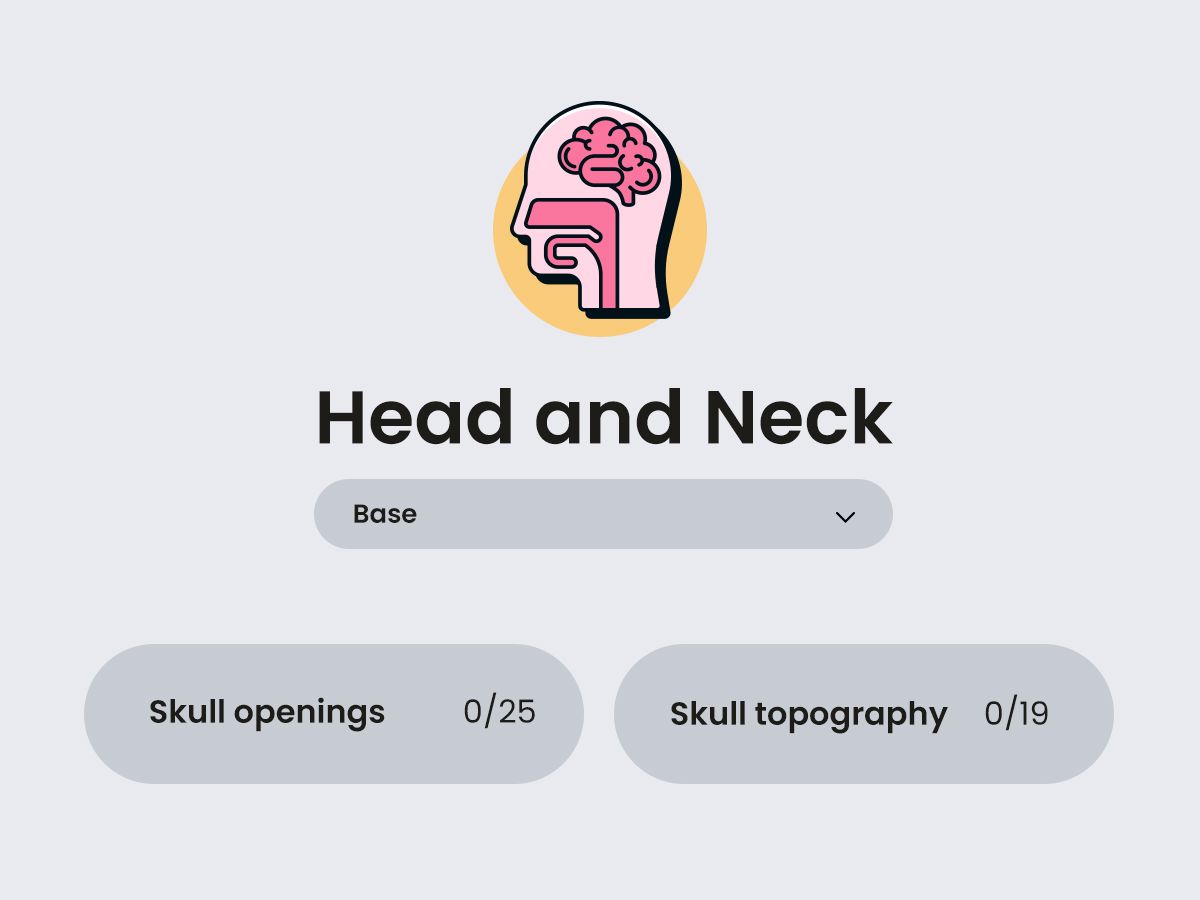Anatomy.app Content News in September

As the summer is saying goodbye and the autumn is slowly approaching, we are excited to finally share some huge and fantastic news with you that we have been quietly working on throughout the summer.
With the new study season upon us, we're introducing an entirely new learning experience - animated 3D models! These easy-to-understand moving materials are already available in our Media Library, simplifying what was once a complex study subject and bringing the biomechanics of the human body within reach like never before. Explore our representations of the joint movements and become a biomechanics expert.
Besides this major addition, we also did some makeovers to two of our Head and neck section articles during August. And as always, whenever a 3D article gets an update, so does the matching quiz. But you can read more about these exciting additions and updates below.
1. Media Library: Animated 3D
We're thrilled to finally unveil a new and unique feature that will completely transform your learning experience - animated 3D models! These cutting-edge animations provide a dynamic, engaging and clear way to understand the biomechanics of the human body.
Human biomechanics have never been so clear and understandable. These materials showcase moving joints, and you can easily see how the bones interact with each other during various movements, making complex concepts more accessible and simple.
As we mentioned before, we've been working hard the entire summer to deliver you these materials, and currently, our animated 3D models cover a wide range of biomechanical movements:
- Biomechanics of the head and neck: axial rotation, lateral flexion, flexion and extension
- Biomechanics of the TMJs: elevation and depression, protrusion and retrusion, side-to-side, and rotational movements of the mandible
- Biomechanics of the spine: axial rotation, flexion and extension, lateral flexion
- Biomechanics of the thorax: rib movements during breathing, axial rotation of the thoracic spine and rib movements, lateral flexion of the thoracic spine and rib movements, flexion and extension of the thoracic spine and rib movements
- Biomechanics of the shoulder girdle: elevation and depression, abduction and adduction, and upward and downward scapular movements
- Biomechanics of the upper limb: flexion and extension, internal (medial) and external (lateral) rotation, and circumduction of the arm, arm abduction, pronation and supination, flexion and extension of the elbow
- Biomechanics of the wrist: abduction (radial deviation) and adduction (ulnar deviation), circumduction
- Biomechanics of the hand: formation of a fist and finger kinetics, flexion and extension
- Biomechanics of the first carpometacarpal joint: flexion and extension, opposition and reposition, and circumduction of the thumb
- Biomechanics of the foot: pronation and supination, plantarflexion and dorsiflexion
We are still expanding this feature, with new materials being added regularly until we cover all movements across all joints. This exclusive content provides a level of detail and insight that is rarely seen elsewhere, making it a unique and invaluable resource for anyone interested in understanding human biomechanics.
To see our new animated 3D models, start by heading to the Media Library on our platform. Once you are there, use the filters that you can find on the left side of the page. Select “Animated 3D” from the media type filter to view all available animated materials. Additionally, you can also choose to filter out a particular area of the body you are interested in, or simply leave the region filter unselected to see the full list of all our animated 3D models.
Explore joint movements now and elevate your understanding of the human body to a whole new level: https://anatomy.app/media?categoryType=regions
2. 3D Anatomy: New Skull Openings Article
You may have noticed that we already had a 3D article on the skull openings, but now it's much more comprehensive. Previously, it didn't cover all the openings, but with this update, it does! While the article may have been around, it feels brand new with this more detailed content.
Now, the 3D Skull openings article features 49 slides, up from just 13. All previous 3D models have been meticulously updated, and many new slides have been added. Each slide starts with a brief description of the opening and contains a summary of which structures and topographical regions it connects, what structures it transmits, and the bone in which it is located.
In addition, to make learning even easier, both internal and external exits of each opening are highlighted in violet so you can quickly spot them. From the foramen magnum to the alveolar foramina, this new article covers all skull openings in detail.
Check out the new article and excel in your anatomy classroom: https://anatomy.app/article/skull-openings-1/openings-overview
3. 3D Anatomy: Partly Revised Skull Topography Article
During August, we also made significant updates to our 3D Skull topography article. Almost all slides now feature fresh and polished 3D models (except the last three, which are patiently waiting for their new 3D models to arrive). All textual descriptions have been fully revised and updated, including the final three slides.
This article has also received a bunch of new slides. Additionally, the previous long texts have been broken down into smaller, more digestible paragraphs, and each now has its own slide. This makes it easier to understand and visualize the subject.
So, the updated 3D Skull topography article now has 32 slides. It covers the cranial base and both its parts (external and internal cranial bases), as well as such topographical regions like the temporal, infratemporal, and pterygopalatine fossae. It also reviews the orbit, nasal cavity, and all paranasal sinuses.
Head to the revised article and clear up any confusion: https://anatomy.app/article/skull-topography/overview
4. Quizzes: Revised Skull Openings and Skull Topography Quizzes
As the 3D Skull openings and Skull topography articles received fresh looks, we also revised and enhanced their matching quizzes. Both quizzes now offer a range of questions across four difficulty levels.
You can now test your knowledge of skull openings with the updated Skull openings quiz, which features a total of 227 questions. The base level contains 25 questions, the intermediate level offers 64 questions, the advanced level has 78 questions, and the expert level will challenge you with 60 questions.
Similarly, the Skull topography quiz now features 204 questions. The base level of this quiz has 19 questions, the intermediate level offers 56 questions, the advanced level contains 71 questions, and the most challenging - expert level - pushes your knowledge with 58 questions.

Think you can master the advanced and expert levels? Test yourself now: https://anatomy.app/quizzes/topics
Final Note
As the new study season begins, the entire team at Anatomy.app wishes you loads of success and growth in your learning journey. Whether you're refreshing your anatomy knowledge or just starting to dive into this fascinating study field, we're here to support you with the best tools and materials available. Remember that no one was born an expert, so be easy on yourself and take things step by step. With us, anatomy becomes such an enjoyable and easily understandable study subject.
Also, don't forget to keep an eye out for the upcoming content in the study bustle because believe us - we want to show you so much more and fantastic new content is on the way. We're excited to be part of your journey and can't wait to see you on Anatomy.app. Best of luck from all of us; you've got this!📚💪🏻
Best regards,
The Anatomy.app Team!🧠